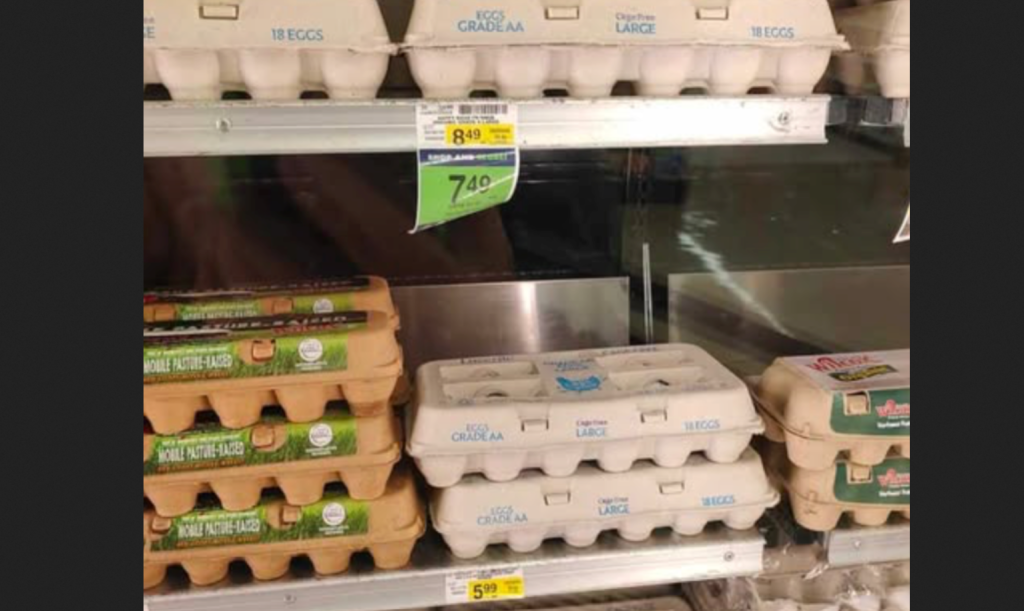In recent times, the surge in grocery prices, particularly the dramatic rise in egg prices, has caused shock among consumers. A report highlighting prices in western Washington shows eggs now costing between five to eight dollars a carton—an unbelievable leap from the 99 cents observed only a few years ago. This inflationary pressure, compounded by ongoing bird flu outbreaks, threatens to push egg prices even closer to the ten-dollar mark. The current situation reflects a broader trend of rising food costs and stark contractions in purchasing power, making something that was once an economical option into a significant expense for families.
The Consumer Price Index (CPI) data corroborates these observations, revealing an alarming 8.2% national increase in egg prices for November, marking one of the most significant monthly price spikes recorded in decades. Moreover, other food items such as beef, coffee, and non-alcoholic beverages have also seen significant price hikes, contributing to an overall jump in grocery costs—the largest since January 2023. Wholesale egg prices escalated by nearly 55% in a single month, with food wholesale prices rising by 3.1%, highlighting the relentless pressures on consumers and the food chain.
This burden of price inflation truly weighs on Americans, with a staggering 37% reporting difficulties in meeting basic financial obligations. The added pressures of the holiday season, including gifts and other expenses, exacerbate the situation. Although the National Retail Federation anticipates a rise in holiday spending, much of this increase reflects the escalating prices of goods rather than heightened consumer demand. Many are struggling financially, resulting in increased reliance on credit cards to maintain previous lifestyles, with the average household credit card debt reaching $10,757.
This excessive credit usage is indicative of broader economic instability, as escalating debt levels lead to an uptick in delinquencies—a concern for both consumers and the broader retail sector. In response to these economic pressures, many retailers are closing stores at an alarming rate, with over 7,000 closures announced in the U.S. in 2024 alone. This drastic increase, up 69% from the previous year, signals a significant downturn in the retail industry, driven chiefly by ongoing inflation, decreased consumer spending, and subsequent bankruptcies among major retailers.
Prominent retailers, such as Macy’s, are actively scaling back operations, announcing plans to close dozens of stores amid ongoing financial struggles. Macy’s escalated its store closure plans due to declining sales, intending to shutter 65 locations before the year’s end. This paints a somber picture for the retail landscape, which has already seen numerous restaurant chains fall prey to bankruptcy amid the current economic challenges. The collapse of Eegee’s, a well-known sub and frozen drink chain, is just one example of how inflationary pressures have disrupted even beloved local businesses.
As we approach 2025, many fear that these challenging economic conditions may only worsen. With an ongoing decline in purchasing power and employment opportunities, there is a growing sentiment that the economic trajectory is veering sharply downward. While the hope remains for a political turnaround with the next administration, the urgency for individuals to adapt to these new realities is pressing. Enhancing personal financial preparedness and resilience has thus become crucial in navigating these turbulent times, as a proactive approach may help mitigate the adverse effects of the looming crisis ahead.

